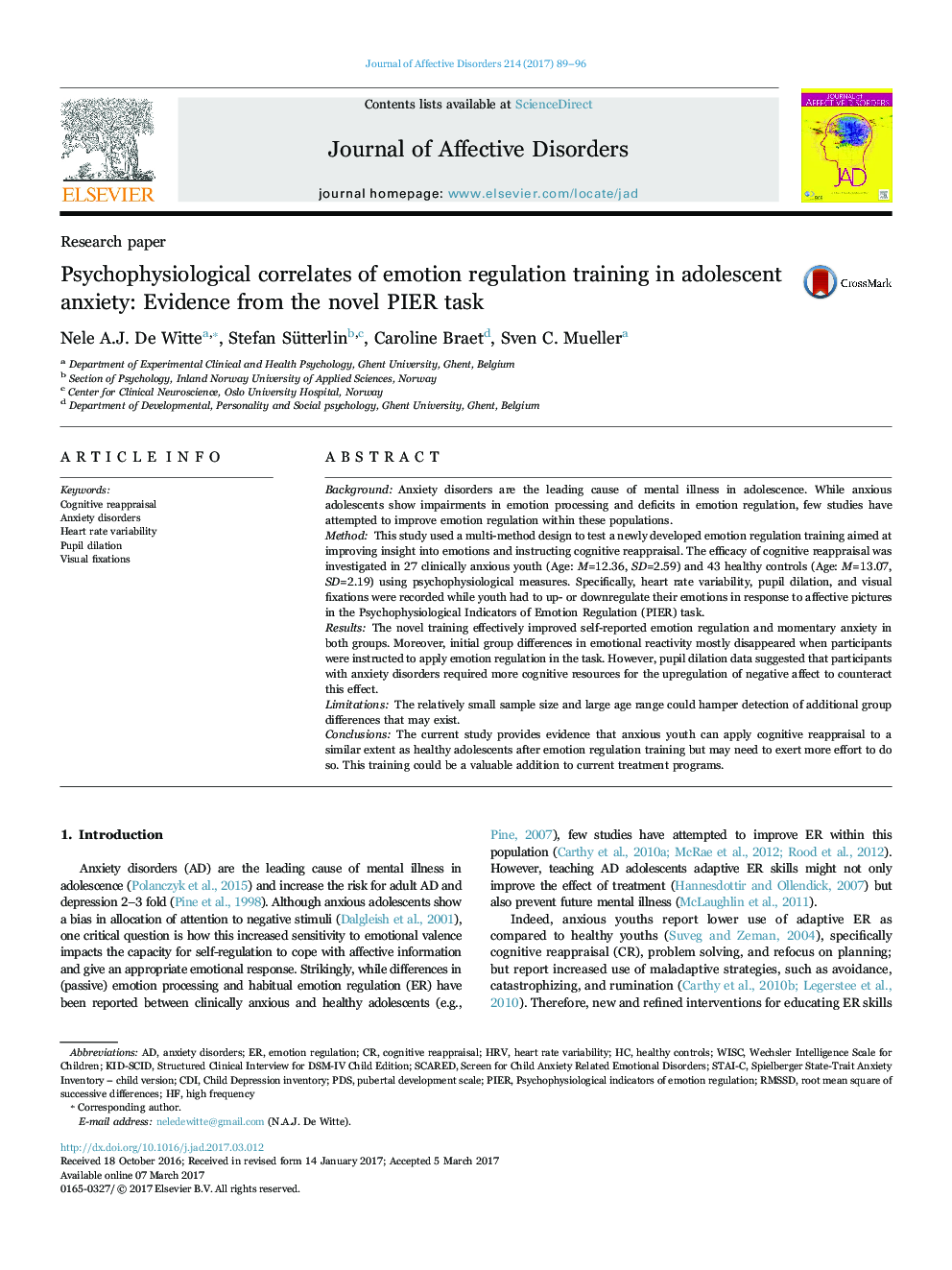| کد مقاله | کد نشریه | سال انتشار | مقاله انگلیسی | نسخه تمام متن |
|---|---|---|---|---|
| 5722038 | 1608111 | 2017 | 8 صفحه PDF | دانلود رایگان |

- A new emotion regulation training was developed and applied in youngsters.
- Training reduced anxiety and improved emotion regulation in anxious participants.
- There were group differences in automatic visual processing of negative stimuli.
- Anxious youth showed higher pupil dilation when upregulating negative affect.
- Low baseline heart rate variability was related to imbalanced cognitive control.
BackgroundAnxiety disorders are the leading cause of mental illness in adolescence. While anxious adolescents show impairments in emotion processing and deficits in emotion regulation, few studies have attempted to improve emotion regulation within these populations.MethodThis study used a multi-method design to test a newly developed emotion regulation training aimed at improving insight into emotions and instructing cognitive reappraisal. The efficacy of cognitive reappraisal was investigated in 27 clinically anxious youth (Age: M=12.36, SD=2.59) and 43 healthy controls (Age: M=13.07, SD=2.19) using psychophysiological measures. Specifically, heart rate variability, pupil dilation, and visual fixations were recorded while youth had to up- or downregulate their emotions in response to affective pictures in the Psychophysiological Indicators of Emotion Regulation (PIER) task.ResultsThe novel training effectively improved self-reported emotion regulation and momentary anxiety in both groups. Moreover, initial group differences in emotional reactivity mostly disappeared when participants were instructed to apply emotion regulation in the task. However, pupil dilation data suggested that participants with anxiety disorders required more cognitive resources for the upregulation of negative affect to counteract this effect.LimitationsThe relatively small sample size and large age range could hamper detection of additional group differences that may exist.ConclusionsThe current study provides evidence that anxious youth can apply cognitive reappraisal to a similar extent as healthy adolescents after emotion regulation training but may need to exert more effort to do so. This training could be a valuable addition to current treatment programs.
Journal: Journal of Affective Disorders - Volume 214, May 2017, Pages 89-96